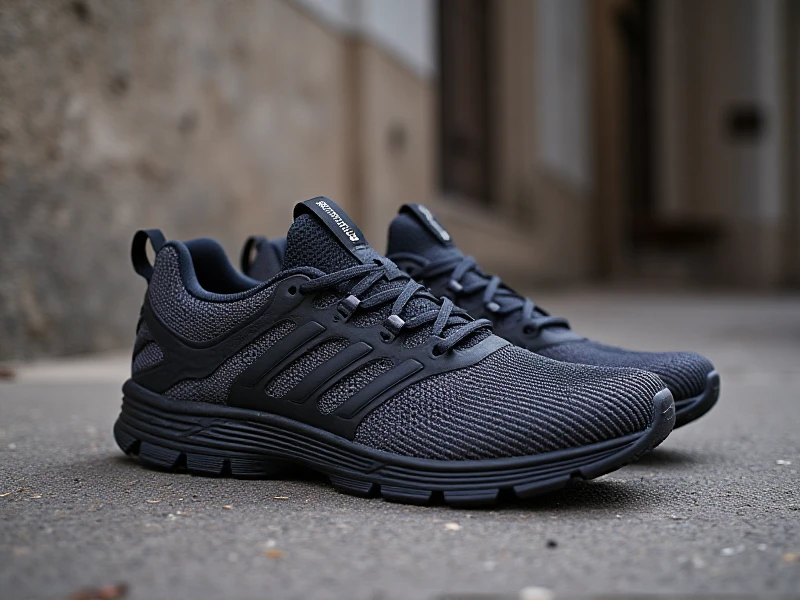Finding Your Perfect Men's Running Shoes: A Guide to Peak Performance and Comfort
2025-06-08

Okay, here is the SEO-optimized article targeting "men's running shoes", written in English as requested.
Choosing the right pair of men's running shoes is far more critical than selecting just any athletic footwear. Running demands precision, support, and biomechanical harmony to prevent injury and unlock your true potential. With countless options flooding the market, finding your ideal match can feel overwhelming. This guide cuts through the noise, outlining the essential features and considerations to help you find men's running shoes that feel responsive, supportive, and effortless mile after mile.
1. Prioritize Fit: Comfort is Non-Negotiable
The cornerstone of any great pair of men's running shoes is impeccable fit. Never assume your regular shoe size translates directly. Feet often swell during runs, so shop later in the day. Ensure about a thumb's width of space between your longest toe and the shoe's end. The heel should sit snugly without slippage, providing lockdown support. Width is equally vital – your foot shouldn't bulge uncomfortably over the midsole edges on either side, nor should it feel overly constricted, impeding circulation. Take time trying on different brands and models; each has unique last fits. Remember, discomfort at the starting gate will only magnify over long distances.
2. Identify Your Cushioning Sweet Spot: Responsive vs. Protective
Cushioning systems are the engine of men's running shoes, protecting your joints. But "more cushion" isn't universally better:
Maximalist Cushioning (High Stack Height): Features thick EVA foam or proprietary compounds (like Brooks DNA LOFT, Nike ZoomX) for exceptional impact absorption. Ideal for heavier runners, those prone to joint pain (knees, hips), or covering long distances when shock protection trumps speed. Can feel pillowy but less connected to the ground.
Balanced/Moderate Cushioning: The versatile workhorse. Offers reliable shock absorption and responsiveness for the majority of runners across various runs and abilities. Technologies like ASICS FlyteFoam or Hoka PROFLY typically strike this middle ground.
Minimalist/Responsive Cushioning: Less material between foot and ground, prioritizing a "ground feel" and quicker energy return. Favored by lightweight runners or those targeting speedwork and shorter races. Requires stronger feet and calves due to less inherent protection.
3. Seek Stability Where You Need It: Gait Matters
Understanding your foot's movement – your gait – is pivotal in selecting men's running shoes.
Stability Shoes: These incorporate features like denser foam posts (often medial/midfoot), guide rails, or structured midsoles to gently correct mild to moderate overpronation (where the ankle rolls inward excessively upon landing). Crucial for preventing biomechanical chain reaction injuries like shin splints or plantar fasciitis. Brands like Brooks Adrenaline GTS and Saucony Guide excel here.
Neutral Shoes: Designed for runners whose feet pronate efficiently without excessive inward roll. They offer cushioning and flexibility but minimal "correction," allowing for a natural gait cycle. Think Brooks Ghost, Nike Pegasus, or New Balance Fresh Foam 880.
Motion Control Shoes: The most rigid, designed for severe overpronators. Offer maximum support/correction but often heavier. Consult a specialist if you suspect severe overpronation. If stability or motion control is recommended after gait analysis, it’s a key non-negotiable feature for your men's running shoes.
4. Don't Skimp on Durability: Outsole & Upper Construction
Your men's running shoes need to withstand pavement pounding:
Outsole: Look for durable, high-abrasion rubber strategically placed in high-wear areas (heel and forefoot). Carbon rubber generally outlasts blown rubber. Quality tread patterns ensure grip even in wet conditions.
Upper: Breathable engineered mesh is the standard now, providing ventilation and form-fitting adaptability. Reinforcements in high-stress zones (like the toe bumper and heel counter) enhance durability and structure. Seamless construction minimizes potential for chafing and blisters.
The Perfect Pair is Personal
Ultimately, the "best" men's running shoes are the ones perfectly suited to your feet, gait, weight, running habits, and even preferred race distances. Visit a specialized running store for expert analysis if possible. Focus relentlessly on fit first, then match the shoe's cushioning and stability features to your biomechanics and running objectives.
Don't let an ill-fitting or unsuitable shoe become your limiting factor. Invest the time upfront to find the right men's running shoes, and experience runs that feel smoother, stronger, and more enjoyable than ever before. Your feet – and your running journey – will thank you.
Category: